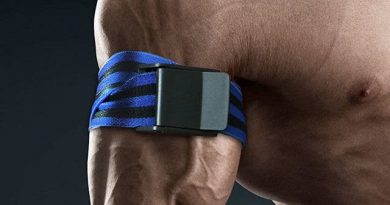How to Exercise at Night and Still Fall Asleep
Do you like to exercise at night? Me too.
Working out is a great way to improve your health, but fitting it into a busy schedule can be tough. For many people, the only available time to hit the gym is at night.
While it’s fantastic that you’re committed to your fitness, a common complaint I hear as a personal trainer is that a late-night workout can make it impossible to fall asleep.
Often, the culprit is a pre-workout supplement loaded with stimulants. Taking high doses of caffeine late in the day can leave you staring at the ceiling instead of getting the rest you need. So, how can you learn how to exercise at night and still protect your sleep?
This guide will give you actionable strategies to balance your evening fitness routine with quality rest, turning your post-workout buzz into a peaceful night’s sleep.
Disclaimer: This article is for informational purposes only and is not meant to treat or diagnose any condition. It is recommended that you speak with your doctor before starting any exercise program, changing your daily nutrition, or adding any supplements to your regimen.
Table of contents
Key Takeaways
- Create a cool, dark, and quiet environment to promote the production of melatonin, the sleep hormone.
- Implement a “digital sunset” at least 60 minutes before bed by turning off electronics to avoid blue light, which disrupts sleep cycles.
- If you work out late, switch to a stim-free pre-workout to avoid stimulants like caffeine, which has a half-life of 5-6 hours.
- Incorporate a dedicated cooldown and mental wind-down routine, using techniques like the 4-7-8 breathing method or apps like Calm.

How to Exercise at Night and Still Get Quality Sleep
Here are a handful of proven strategies you can use to get a better night’s sleep after you exercise at night.
1. Create a Pitch-Black Sleep Sanctuary
Your body needs complete darkness to produce melatonin, the hormone that signals it’s time to sleep. Even small amounts of light can disrupt this process.
Invest in high-quality blackout curtains or shades to block all outside light. When shopping, make sure you take precise measurements of your windows to prevent light from leaking through gaps on the sides. Brands like NICETOWN and Deconovo are popular for their effectiveness.
Don’t forget to cover the small LED lights from electronics like TVs and power strips, as even that tiny glow can interfere with your sleep quality.
2. Engineer Your Cool-Down
Your body temperature naturally drops to initiate sleep. A late-night workout raises your core temperature, which can make falling asleep difficult. You need to actively cool down.
The first step is a post-workout shower. A warm shower about 90 minutes before bed can actually help. While it initially warms you, the rapid drop in body temperature afterward mimics the natural process that triggers sleepiness.
According to the Sleep Foundation, the ideal room temperature for sleep is around 65 degrees Fahrenheit (18.3 degrees Celsius). Adjust your thermostat, open a window, or use a fan to create this optimal environment.
This cool environment helps lower your body temperature and signals to your body that it’s time to rest.
3. Implement a Digital Sunset
The blue light emitted from your phone, tablet, and computer screen is a major enemy of sleep. It suppresses melatonin production and tricks your brain into thinking it’s still daytime.
In my experience as a coach, the most effective solution is to set a strict “digital cutoff” at least 60-90 minutes before your intended bedtime. Put your phone away and keep it on silent. Your 2 a.m. Facebook feed can wait.
Most smartphones have a feature to help with this. Apple’s “Night Shift” and Android’s “Night Light” reduce the amount of blue light from the screen. You can also activate a “do not disturb” mode to block notifications during your scheduled sleep hours. This is a simple “set it and forget it” fix that makes a huge difference.
4. Actively Wind Down Your Mind
An intense workout can leave you feeling physically tired but mentally wired. You need to actively de-stress to lower cortisol levels and calm your nervous system.
Instead of just lying in bed hoping your brain will shut off, try a structured wind-down routine.
- Guided Meditation: Apps like Calm or Headspace offer short, guided meditations specifically designed for sleep.
- Box Breathing: A simple technique where you inhale for a count of four, hold for four, exhale for four, and hold for four. Repeat this for a few minutes.
- Journaling: Spend five minutes writing down anything on your mind. This “brain dump” can clear your head of racing thoughts and to-do lists.
5. Choose Your Pre-Workout Wisely
If you exercise at night, that high-stimulant pre-workout is likely the primary reason you can’t sleep. Caffeine has an average half-life of 5-6 hours, meaning half of it is still in your system that long after you consume it. A 7 p.m. workout with 200mg of caffeine means you still have 100mg in your body at midnight.
The good news is you don’t have to sacrifice performance. The market for non-stimulant pre-workouts has exploded. These products use ingredients that increase blood flow and focus without the jitters.
A good stim-free pre-workout is a must-have for any serious evening lifter. Look for products with effective doses of ingredients like L-Citrulline for pump and Beta-Alanine for endurance. Brands like Transparent Labs and Legion Athletics offer excellent stim-free options.
Stimulant vs. Stim-Free Pre-Workout
| Feature | Stimulant Pre-Workout | Stim-Free Pre-Workout |
|---|---|---|
| Primary Energy Source | Caffeine, Yohimbine | Nootropics, Beta-Alanine |
| Effect on Sleep | Highly disruptive if taken late | Minimal to no impact |
| Best For | Morning or early afternoon workouts | Evening workouts or those sensitive to caffeine |
FAQs
- What is the best type of exercise to do at night?
While any exercise is better than none, some people find that extremely high-intensity workouts like HIIT or heavy CrossFit-style circuits can be too stimulating close to bed. In my experience, activities like steady-state cardio, traditional strength training, or yoga are often better choices for the evening as they are less likely to spike adrenaline as dramatically. - How soon before bed should I stop working out?
The general recommendation is to finish your workout at least 90 minutes before you plan to go to sleep. This gives your heart rate and core body temperature enough time to start decreasing. A 2021 study published in Sleep Medicine Reviews confirmed that evening exercise doesn’t negatively impact sleep as long as it ceases at least one hour before bedtime. - Does a post-workout meal affect sleep?
Yes, it can. A large, heavy meal right before bed can interfere with sleep as your body works to digest it. Aim to have your post-workout meal or shake, containing both protein and carbs, right after your workout. This ensures you finish eating at least an hour or two before lying down.


*Disclosure: This article may contain affiliate links or ads, which means we earn a small commission at no extra cost to you if you make a purchase through these links. These commissions help support the operation and maintenance of our website, allowing us to continue producing free valuable content. Your support is genuinely appreciated, whether you choose to use our links or not. Thank you for being a part of our community and enjoying our content.
PLEASE CONSIDER SHARING THIS ON YOUR SOCIAL MEDIA TO HELP OTHERS LEARN MORE ABOUT THIS TOPIC.





